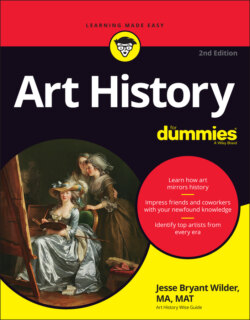Читать книгу Art History For Dummies - Jesse Bryant Wilder - Страница 103
Depicting the unification
ОглавлениеThe Palette of Narmer is a two-sided work of art that recounts the story of Narmer’s victories on the battlefield. On one side, Narmer wears the white bowling-pin crown of Upper Egypt; on the flip side, his head’s topped with the red hatchet-shaped crown of Lower Egypt. The artist made Narmer at least two times bigger than the people around him to show his superior status — not only was he bigger and better, but he was also worshipped as a god on earth. (A pyramid text states, “Pharaoh’s lifetime is eternity/His limit is everlastingness.”)
Post-unification pharaohs usually wore a double crown, combining the white crown of Upper Egypt and the red crown of Lower Egypt. The symbols of Lower Egypt are papyrus, which thrives in the Nile Delta, and the cobra. Those of Upper Egypt are the lotus and the vulture.
Though it seems like backwards thinking, Upper Egypt is lower on the map than Lower Egypt — that is, Upper Egypt is geographically south of Lower Egypt. How did that happen? Unlike the Tigris, Euphrates, and Mississippi rivers, the Nile flows from south to north, which is a downhill trek from its source at Lake Victoria in Central Africa to the Mediterranean Sea.
